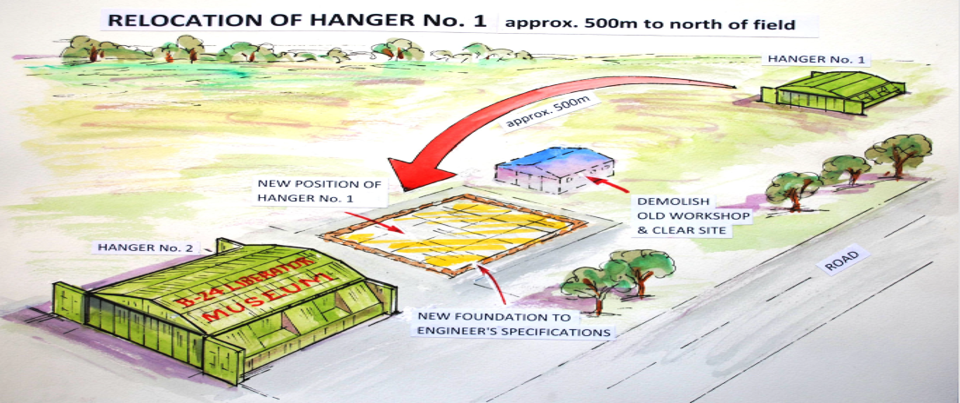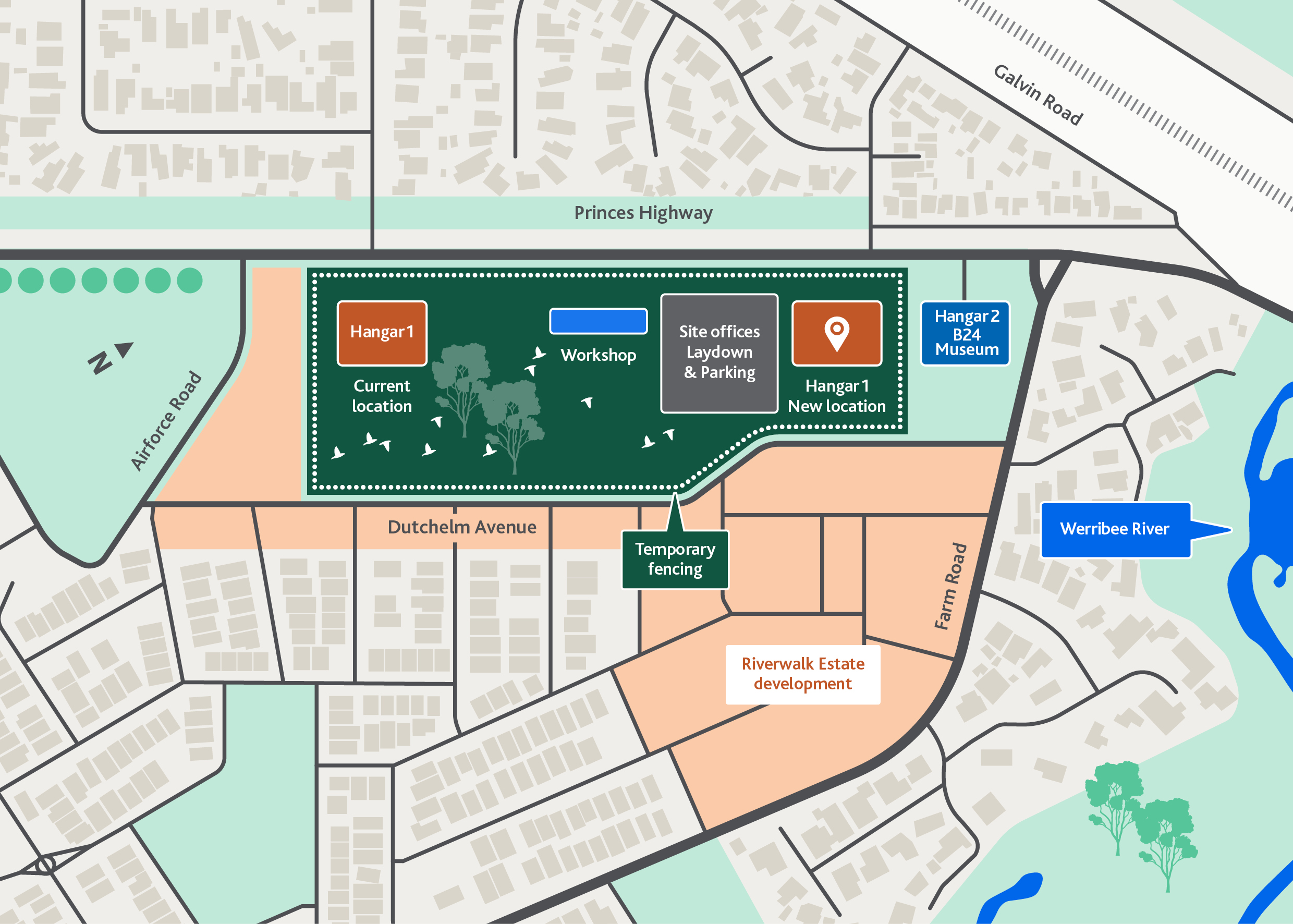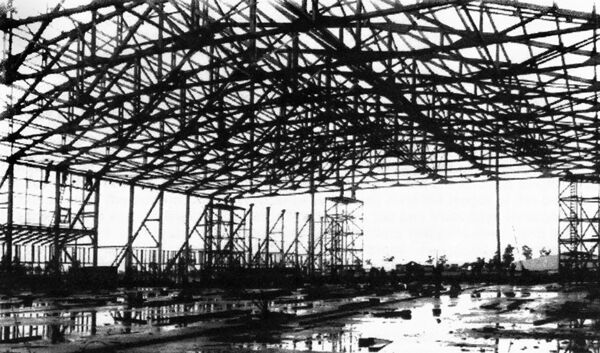To support the development a P–12 independent school, as part of the Riverwalk Estate community infrastructure development, we will disassemble, relocate and reassemble Hangar 1 closer to Hangar 2 near the B-24 Liberator Museum and demolish the workshop at the Werribee Satellite Aerodrome site.
Melbourne Water manages large areas of land across Greater Melbourne for operational purposes including water supply, sewerage, drainage and biodiversity. Some of this land can also be used for commercial and community uses. We are committed to enhancing liveability for the Greater Melbourne region, today, tomorrow and for generations to come.
Project scope and benefits
Hangar 1 is located on a parcel of land on the corner of Airforce Road and Princes Highway, Werribee. This project involves:
-
disassembling, relocating and reassembling Hangar 1, closer to Hangar 2 near the B-24 Liberator Museum
-
numbering and restoring each piece of Hangar 1 before reassembly
-
demolishing the lower-heritage workshop at the aerodrome site
-
removing heritage registration from the old Hangar 1 and workshop site after relocation.
Benefits include:
-
continued heritage protection at the new, consolidated hangar site
-
making land available for a new P-12 independent school within Riverwalk Estate, subject to planning approval
-
enhancing visitors’ experience at the B-24 Liberator Aircraft Restoration Museum, which preserves aircraft and associated items of historic value, with a renewed educational and tourism focus
-
creating a new entrance for the B-24 Liberator Museum from Dutchelm Avenue via Farm Road.
What’s happening
Our delivery partners, Safety Focused Performance Joint Venture, will begin preparations for construction.
You may notice:
-
temporary fencing and site offices
-
site investigations (surveying, geo-testing, dilapidation reports, tree protection)
-
a temporary vehicle crossing from Princes Highway for construction vehicles
-
storage for plant, equipment and materials on a temporary laydown area.
What to expect during construction
We aim to minimise disruption, but during works you may notice:
-
construction traffic: increased truck and machinery activity. Traffic controllers and a management plan will be in place
-
driveway access: we expect to maintain private property driveway access but will notify you in advance if a closure is needed
-
dust: water trucks and street sweepers will be used to minimise dust and transport loads will be covered
-
noise and vibration: some minor disturbances expected during excavation and machinery operations. We will work closely with the appointed contractor to manage noise impacts as much as practicable
-
asbestos: we may encounter asbestos while we work. Removal will be undertaken by a licensed asbestos removal company. An asbestos removal control plan (ARCP) will be developed to ensure that adequate measures are in place to minimise risk and to meet regulatory requirements.
We appreciate your patience and support as we restore this important heritage site while building for the future of Werribee.
Working hours
In line with EPA guidelines, standard working hours are:
- Monday to Friday, 7am to 6pm
- Saturday 7am to 1pm.
Some night work will be required, and we will notify impacted residents and businesses before this happens.
We’ll let you know if we need to carry out any urgent work outside these hours.
More about this project
Historic background
Werribee Satellite Aerodrome complex was built in 1942, during the Pacific War campaign of World War II. The site served as a training base supporting Point Cook and Laverton air bases. It also assembled and repaired aircraft.
The complex was built on land leased from the Melbourne Metropolitan Board of Works, and originally included:
-
five timber-trussed hangars
-
a workshop
-
accommodation and administration buildings.
Due to wartime steel shortages, the hangars were constructed with unique ‘green’ hardwood trusses. The top chords were designed in a parabolic pattern – a rare and technically-significant approach used across Australia.
In 1952 the land and buildings were returned to Melbourne Metropolitan Board of Works. The former Aerodrome site and surrounding land is no longer needed by Melbourne Water. Today, only two hangars and the workshop remain.
Heritage significance
The Werribee Satellite Aerodrome is significant at a State level for the following reasons:
-
architectural, historical, social, and technical value
-
association with the United States Army Air Corps
-
influence of American engineers via the Allied Works Council
-
status as the only surviving example of a World War II satellite aerodrome in Victoria
-
unique timber truss design using steel shear connector plates – the only one of its kind in Victoria.








